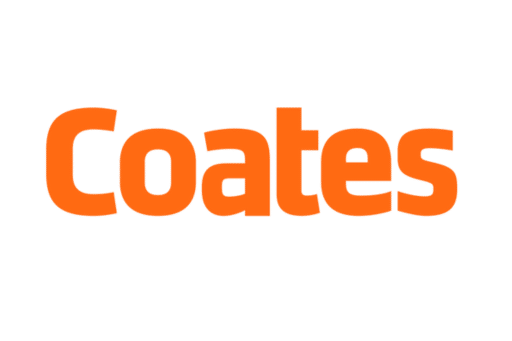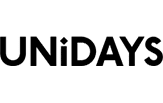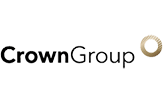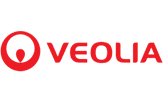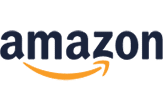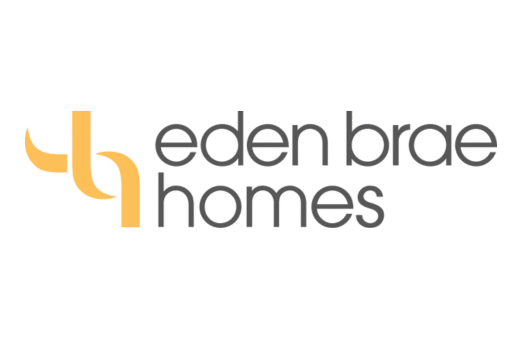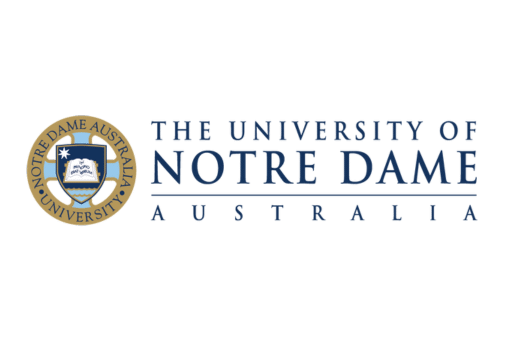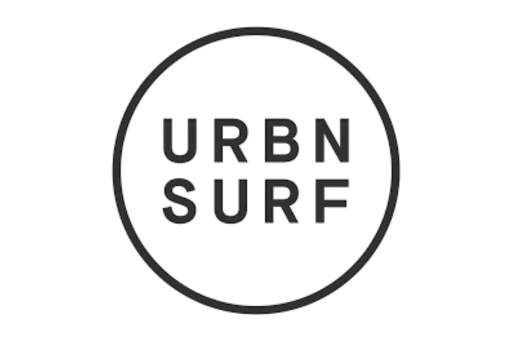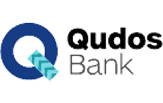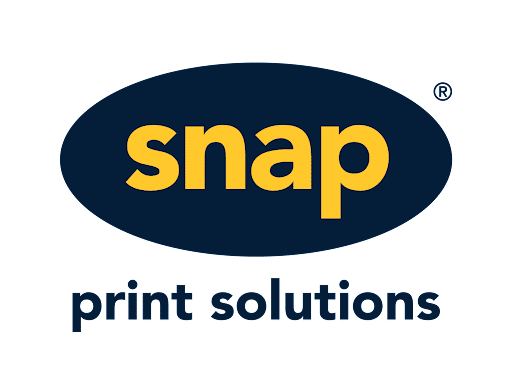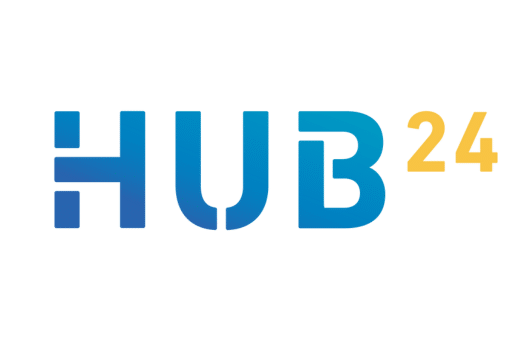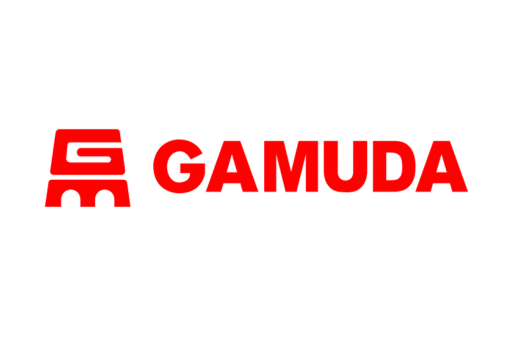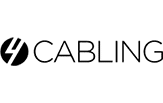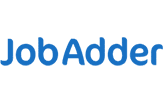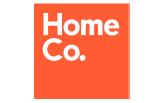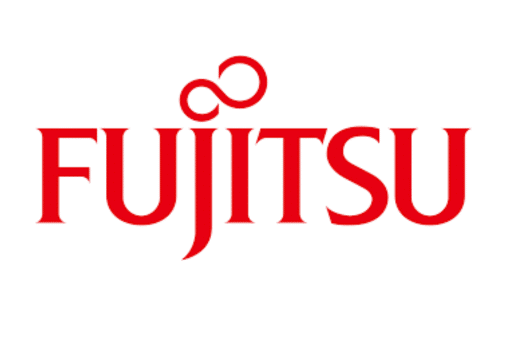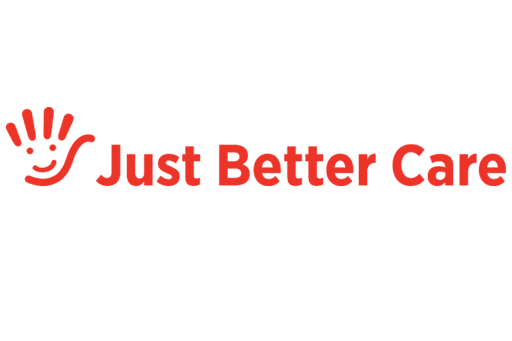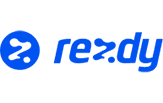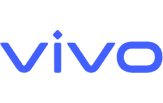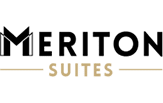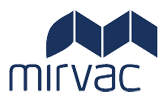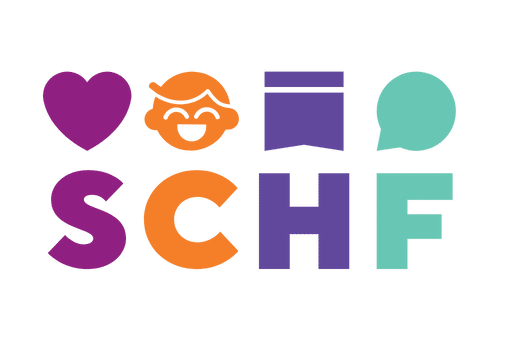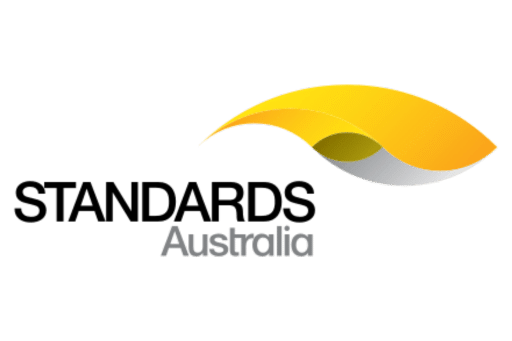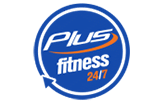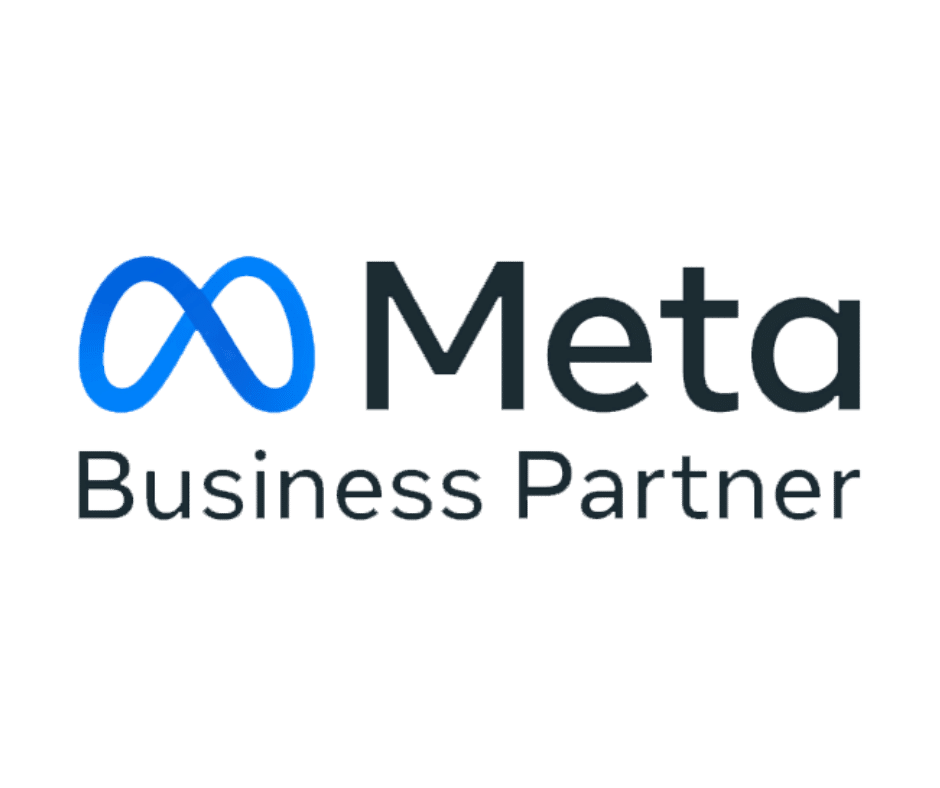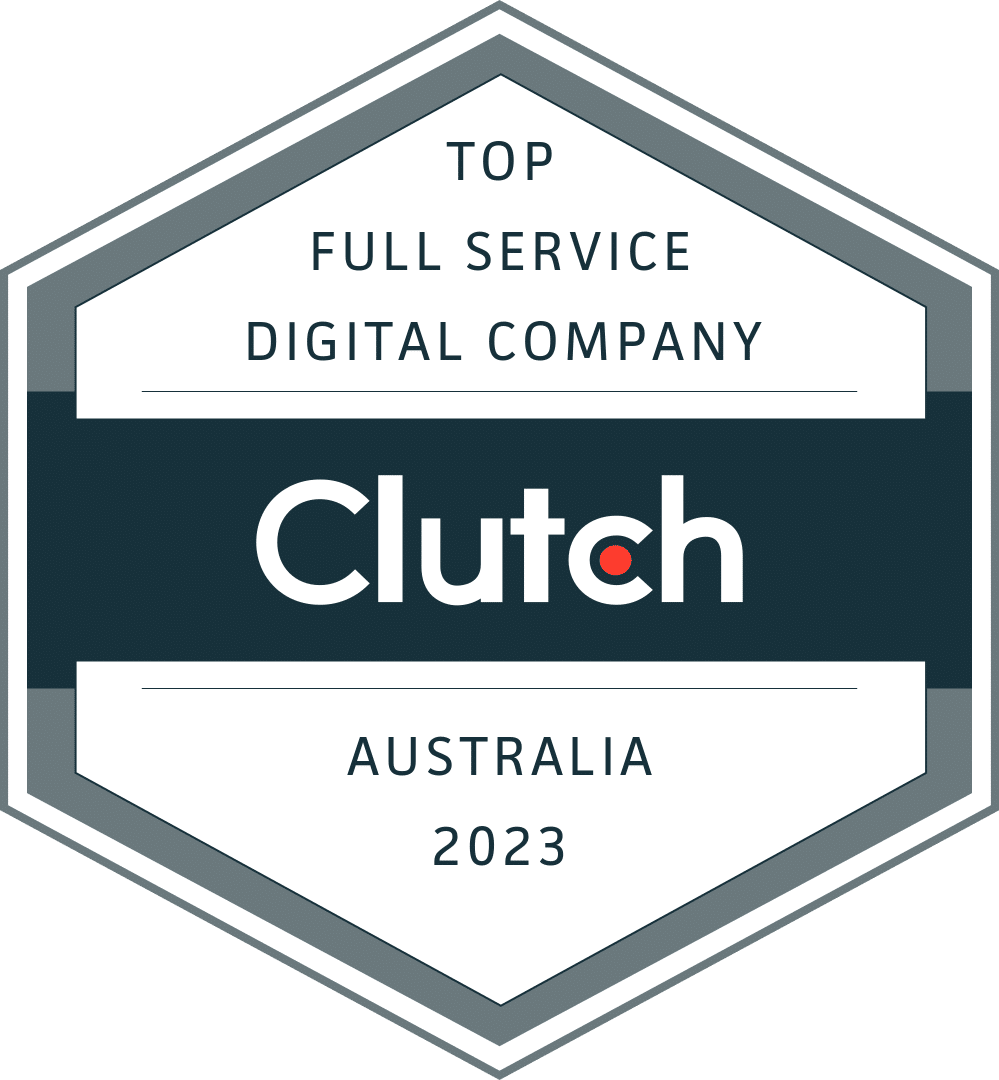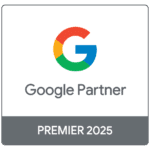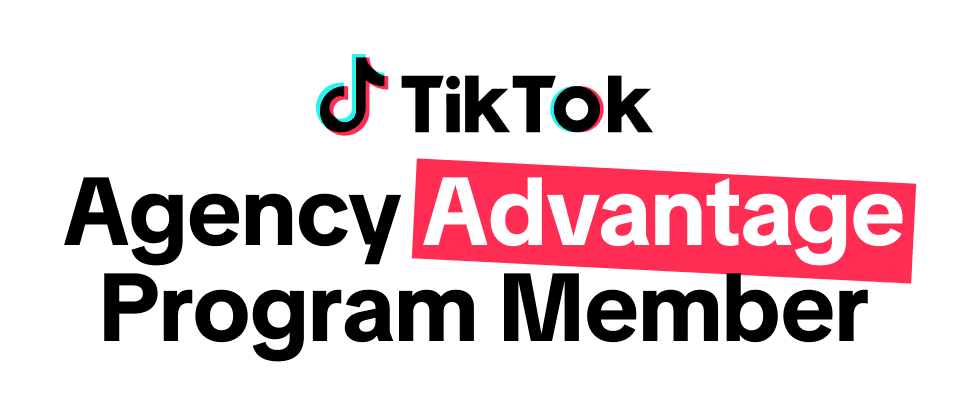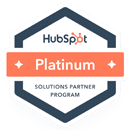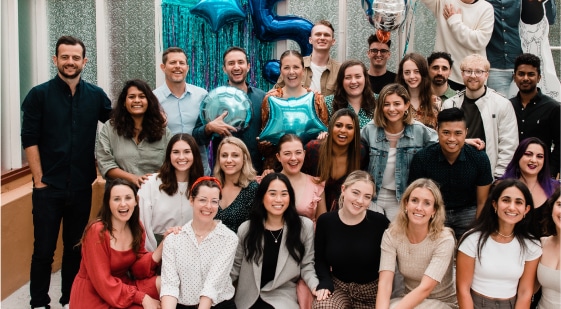LinkedIn Ads That Work: Expert Tactics
Episode Description:
AJ Wilcox, Founder of B2Linked, has worked with 5 of LinkedIn’s top 10 spending accounts and managed over $150 million in LinkedIn ad spend. Host James Lawrence chats with AJ as they delve into key strategies for maximising the output of LinkedIn ads in 2025, the significance of Thought Leader ads, lead-generation tactics that actually work and more.
Key Takeaways:
- The evolution of LinkedIn ads over the years
- Effective LinkedIn ads strategies and funnels
- Lead generation and conversion tactics
- Thought Leadership ads: A game changer
- LinkedIn ads vs. other platforms
- Effective creative for LinkedIn ads
- Exploring Connected TV ads
- Advanced targeting techniques
- The future of LinkedIn ads
Featuring:
About the Guest:
AJ Wilcox is the Founder of B2Linked, a LinkedIn Ads-only agency that helps B2B marketers get better results from their LinkedIn campaigns. AJ has worked with 5 of LinkedIn’s top 10 spending accounts and managed over $150 million in LinkedIn ad spend.
He is a trusted expert in LinkedIn Ads and has spoken at more than 80 industry events and appeared on over 200 podcasts. You can follow AJ on LinkedIn.
Transcript
James Lawrence: Welcome back to the Smarter Marketer podcast. I'm here today with AJ Wilcox. AJ, welcome to the pod.
AJ Wilcox: I'm so excited to be here. Thank you for the invite.
James Lawrence: We're excited. We're chatting off-air. And, um, basically AJ's recording from Utah.
I'm recording from Sydney, almost in the middle of summer. We're, we're kind of at 33 degrees. Um, AJ said it snowed yesterday or last week for the first time.
AJ Wilcox: Yep. We're probably three ish degrees. So we're a little opposite ends of the world.
James Lawrence: It couldn't be much more different. So, um, I'm really excited about today's conversation.
AJ is the owner and founder of B2Linked, which is a LinkedIn ads only agency dedicated to helping B2B marketers and recruiters optimise LinkedIn ads. In terms of bio, AJ has managed five of LinkedIn's top 10 spending accounts, has spent over 150 million in LinkedIn ad spend. He's presented on LinkedIn ad strategy across 80 industry events, been featured on more than 200 podcasts.
I've seen AJ present at a conference in North America and he's an awesome presenter and he knows his stuff. So hence having him on the pod. For those of you that are listening, he's pumping his, uh, He's fist into the air. He's excited. . We love that. Um, so today, essentially we're gonna discuss how to get the most out of LinkedIn ads where the product is as we kind of get towards the beginning of 2025.
But I thought I, I'd like to take a quick step back, AI, and, and what made you start B two linked, like how, what's the origin story and how did you get into the space?
AJ Wilcox: Yeah. Well, at the. Last company I worked for, this is 14 years ago. Um, I went in on my very first day. I was the first digital marketer, uh, for a, uh, for a SAS company that's now public, but this was back before it was public.
And I remember, uh, I went in as an SEO and a PPC guy and my boss, the CMO said, Hey, by the way, go ahead and do what you were planning on doing. But we just started a pilot using LinkedIn ads. So see what you can do. And I jumped into the platform cause I didn't want to look stupid to my new boss. I didn't want to look like I didn't know what I was doing.
And I actually took the same strategies that I used for Google ads at the time and, and implemented them on LinkedIn. And within weeks, the sales team was coming up and saying, AJ, we're fighting over your LinkedIn ads. Sorry, your LinkedIn leads, keep it up. So I, I kept growing and expanding and investing in LinkedIn ads.
And after growing that to become LinkedIn's largest spending account in the world. I went, okay, there have to be more companies than just this one that would slay it on LinkedIn ads. And so, uh, 10 years ago, um, last month, that is when I started B2 Linked just to be able to bring all of those enterprise level tricks and strategies to every level of account.
James Lawrence: That's an awesome story. It's, um, well, congratulations. First of all, I think 10 years of running your own business is no, no mean feat. And it's so, it's so common. So many people that kind of made their way into the industry, into digital, I think in through that generation, it was this, I think the same story as my own.
Right. I was kind of at uni and I was kind of throwing this, Hey, do you want to do some internet marketing? And I absolutely, I can do the internet marketing, having absolutely no idea what, what it was or what I had to do. And then you kind of. A lot of it's self taught, right? And there were kind of universities to go to back then.
AJ Wilcox: Yeah. And what's so interesting is I actually got my degree in marketing, but all the way through my, my degree, I graduated in 2008. I never had a single class, uh, teach me about digital marketing. It was like, they were trying to set people up to go into Madison Avenue agencies and buy radio ads and billboards.
Um, so I have, I've, I've learned a hundred percent of this. On my own in in companies and I love how self taught our industry really is. Yeah,
James Lawrence: and definitely like a I think from our experience the best staff members the best team members we've had over the years are the ones that have that kind of curiosity and self self teaching and Um, and kind of just learning by trial and error and by industry websites and blogs and webinars and all those types of things, right?
AJ Wilcox: Oh, yeah, it's a skill that I don't think can be taught very easily. But when someone has it, when they have that natural hunger, uh, they're great. You want to keep them around.
James Lawrence: Yeah, curiosity. It's a great trade. So, I mean, how has the, um, what's the evolution been like of LinkedIn marketing ads? So the ad platform from when you started to now, what are the big changes been?
AJ Wilcox: Well, when I very first started advertising the only ad that you could run on LinkedIn, it was, uh, it's over in the right rail only when you're logged in on desktop called text ads. That was the only ad format until 2013. Um, so I, I got really good at those, but you only have 25 characters, headline 75 characters of for body copy.
So there wasn't a whole lot you could do with that. But since then, you know, in 2013, LinkedIn launched the news feed. And then we got news feed ads like what they called sponsored content at the time And then they launched video versions of those and now we have carousel and document versions in the news feed We have another ad type Called sponsored messaging where we can pay to drop a message right in someone's linkedin inbox their messaging box um, we've we went from having like I think there were eight or nine different ways of targeting someone to now we have at last time I checked like 33
James Lawrence: Yeah,
AJ Wilcox: lots of new targeting.
We have conversion tracking which doesn't seem like a big deal But it was they didn't have it for an embarrassingly long amount of time. We have retargeting Uh, and linkedin's retargeting is significantly better than metas in in many cases So i'm really excited about what linkedin's done there Um, and as of just this last couple years, we now have thought leader ads so the ability to promote a an individual's post rather than Linkedin
James Lawrence: And I'm really keen to kind of unpack a few of those changes you kind of gone through, but particularly thought leadership ads and just to kind of see what you're saying with the clients that you work with.
Um, what I mean, this might sound like a simple question, but given the broad spectrum of clients that you work with, where do you see? LinkedIn ads working best at the moment. Like what verticals do you generally find play really strong, um, verticals that over the years you really struggled to, to kind of get success within.
Um, and I, and I think we're presuming that we're talking B2B here, right?
AJ Wilcox: Yeah. And if you're, if you're okay with it, I'll actually venture outside of B2B. Cause I was
James Lawrence: curious on that. Yeah.
AJ Wilcox: Yeah, there is a vertical that, uh, has been successful on LinkedIn ads since the very beginning and, uh, and because it's not B2B, it kind of doesn't get a whole lot of credit, uh, but that's recruiting, you know, LinkedIn has a recruiter product where they'll show ads and try to promote your, your one click job listing.
Um, but. Everyone, like you talk to any recruiter, they say they absolutely hate it because when you only require one click to apply for the job, they get a ton of spam. A bunch of people who are not qualified at all. And they're just spam clicking in hopes that someone will hire them for something.
James Lawrence: Yeah.
AJ Wilcox: Whereas we can take the same target audience that we want, target them using the marketing side of LinkedIn. You know, say, Hey, you look qualified for this. Are you interested in applying for our position? Um, send them to a. A job posting that you have, it's not one click and, uh, we consistently beat out the, the recruiting side, uh, using a marketing product.
It's amazing.
James Lawrence: Hmm. So, so significant part of your business is working with either recruiters or within corporations within HR trying to find high quality candidates using the marketing platform rather than the actual LinkedIn recruiter. Yeah.
AJ Wilcox: Yeah. And there's not a huge need for that right now, uh, just cause the job market is kind of rough for everyone.
Uh, not a whole lot of people actively recruiting, but, uh, the ones who are linked in kills it. And,
James Lawrence: um, yeah, it's an interesting, I haven't ever thought of, um, of, of applying the ads platform to that purpose.
AJ Wilcox: Yeah, it's really cool. I, I absolutely love throwing that into, uh, into deals when we're working with the marketing team and we say, Hey, you know, feel free to pull in your HR person.
Like, let's start promoting some of your, your open positions.
James Lawrence: Yeah, nice one. And I guess, uh, over that last 10 year period, are there any verticals where you've really struggled, where you kind of just can't get the traction in this, in this vertical, tried it a few times, can't get it working?
AJ Wilcox: Oh, this is a good one.
Surprisingly agencies like. Uh, almost agencies of any kind.
James Lawrence: Um,
AJ Wilcox: it's really difficult. Like we know as agencies, like you and I both have an agency. Uh, I know who are our ideal client profile. I know the kind of content that, that people tend to like. Um, but for some reason, every agency, almost every agency we've run ads for, uh, we have a really difficult time driving, like, You know, a low cost per meeting and, and a high volume of meetings for their sales teams.
James Lawrence: that's really, yeah, really interesting. And we, we broaden it away from just LinkedIn at any, anytime anyone comes in and looks at what we're doing as, as an agency to market ourselves with fresh ideas, new, new, new marketing resource. It's always, Hey, let's, we're not doing enough on social. And I was in a meeting recently.
I said, I just, I don't want to hear that ever again, because we've tried it and it doesn't work. And I think for me, probably speaking more Probably a little bit more around the B2C social channels in terms of Facebook and, um, and Instagram where I just don't believe it's a place for agencies to play. I think it's okay organically to put stories about your team and anniversaries and those types of things.
But in terms of LinkedIn, yeah, we've dabbled in the paid, we use it a lot organically. I think it's awesome for us as individuals and talk about client wins and awards and those types of things. And I think that's quite effective. From a paid viewpoint, we did a lot of sponsored content, SpawnCon, um, years ago, we used to kind of get, uh, kind of guides out there for running webinars, we'd, um, do a bit of the top of the funnel stuff, but definitely, yeah, from a, um, uh, trying to actually generate inquiries, I think, fair to say, we've probably never generated one from the, the paid
AJ Wilcox: platform.
Yeah. Yeah. Same here. And I mean, we have generated some, like, I feel like to. Really be good at what we do. And you know, we claim to be the very best in the world on LinkedIn ads, uh, to have, uh, to have no leads generated from paid. Like, I don't think I allow myself that, but, um, but yeah, we, we've run a pretty decent program.
We've done okay for ourselves, but that's like years of testing and we've worked with lots of clients who are agencies haven't found a whole lot of love there. Then like on top of that the vast majority of our business like we have a form Um for our discovery call form where it says how'd you hear about us?
Um over half Say linkedin and so from an organic perspective linkedin is great. But from a paid like We get much better results for our clients than we do ourselves.
James Lawrence: Yeah, it's really interesting, isn't it? I definitely found that many many many years ago that how a digital agency will Find new clients can often be very different to the the techniques and disciplines They're using to work for their clients, and I think that's okay, right?
I think that's um, That's that's acceptable. What um In terms of the verticals that you generally are like, yeah, this is a A winning vertical when a prospective client comes to you and says, Hey, I'm working in X and you're like, yeah, we've done this. And this, I know we can. Um, kick some goals for you. What are those ones that we kind of almost no brainer categories?
AJ Wilcox: Um, I would put in a category here, anyone, whether it's B2B or B2C, who's generating leads where the end result is a lifetime value of more than, than I'll say, 10 K or 15 K or ideal size. And the reason why is like, I haven't yet found a, an industry or a kind of product that doesn't work on LinkedIn when you reach the right people and share the right message, put the right thing in front of them.
And so what's really the differentiator when someone comes to us and they say, uh, we're in this industry, we want to advertise. My first question is. Okay. What kind of content do you have to get their attention? And if they say, well, we just want to drive people right to a demo page, like talk to sales, good luck.
You know, 5 percent of the time, maybe you can get people to fill that out who are cold audiences. But 95 percent of the time audiences need more nurture. They need more education. They need to know, like, and trust you before they ever fill out a form and say, I want to talk to someone. So I think it's all about the content that you have.
And what do you have that's actually interesting to get their attention and keep it.
James Lawrence: And how's that working for you at the moment? Like even the changes in the ad platform, it started off desktop, little tile on the right hand side. And then you kind of got ads in feed. Um, what does the strategy look like?
You know, and maybe the SAS one's a good example. You mentioned, you know, if you're going to come to me and say, you know, sign up for a demo, it's probably not going to work. We need to kind of warm up the audience, attract them with content that's relevant. What are you kind of funnels looking like? And what are you using different?
Um, add formats at different stages of the funnel. I presume, you know, we're not talking lead ads at the top of the funnel. It'd be interesting just to see what you're kind of what's working out there at the moment.
AJ Wilcox: Yeah, I would say I'm surprised much of the time. We actually do have some clients who are running lead gen forms.
Like to cold audiences and it works for them, but I'd say most of the time it doesn't, um, my ideal funnel, I love to start with video and video thought leader ads are my preferred, but it could just be just normal video ads. And what I like to say is to cold audiences. Let's have you, uh, you know, anyone who watches at least 50 percent of a, of a, a video ad, then I want to graduate you to the next step.
Um, then at the next step, something else that, cause video fills retargeting audiences very quickly because you can say, Watch at least 25 percent or whatever, and then you get put into an audience. So if you're trying to fill a three stage funnel, having things in the first two stages that are very efficient at getting retargeting audiences, um, That's awesome.
So I love anything video. I love document ads because you can say if, if someone's even swipes to the next page of a document ad graduate them, you can also do like single image ads where you say any kind of interaction. If it's a like a comment, you know, clicking to the company page, all of those interactions graduate them down.
And that's what I see the first two stages being is trying to make them as efficient as possible when you're just getting started.
James Lawrence: Yeah, but we find that as well, right? Like video in linkedin is just an absolute winner at the moment. Probably has been for the last few years where it does just and I think you kind of touched on it when we do get surprised, right?
There'll be certain clients where you think something will work and it just works in an inverse way. And that I think is digital marketing more broadly, but generally speaking. Um our paid teams find that running video ads with engaging content Ideally with a with a with a talking head or a face or something that kind of engages Is that kind of hook at the beginning, right?
AJ Wilcox: Absolutely. Yeah, there are lots of companies out there who will say Oh, yeah, we we have video we'll we'll do a video ad and then you look at their video and it It takes eight seconds to fade from black to their company logo. And you've lost people. Um, but if you can start with a face, someone who is like, Hey, let me give you a tip, a trick, a strategy.
I'm, I'm showing you value. I'm showing you that I'm a real person. Uh, that kind of video content is doing great. And the beautiful part for all of us is that that kind of video is so cheap to create compared to an animated, you know, something that you got to pay a studio tens of thousands of dollars for.
James Lawrence: Yeah, 100%. And then once you're moving down, are you using lead gen ads that I guess maybe explain for the audience what those are, but what are your other options with that kind of the final ask? Or are you pushing to websites? I suggested, I suspect it might depend a little bit, but like, what are you, what's working, what's not working in terms of actually getting lead generation coming out of the platform?
AJ Wilcox: Yes. Okay. So if we want to collect someone's information, first name, last name, email, you know, it's something that simple. We have two options. We have, like you mentioned, the lead generation form on LinkedIn. It's a native form that's built right in. And this is very efficient, very high conversion rates.
Of getting people to to fill it out, uh, because what linkedin does is they auto fill everything they know about you. So if someone's on a mobile device where it's annoying to type their whole email address for the 900th time, all they have to do is hit the submit button. Great. You'll probably get four times the conversion rate using those as you do sending them to a website, but that's your other option.
You could send them to a landing page on your own site, uh, where you have your own form and. They won't convert as well. Most of the time. It's it's a page load a page load speed kind of issue where. Someone clicks on the ad and then when it takes more than one second for the the page to load they go I didn't really want it that bad anyway, and they they bounce but linkedin still charged you for the click But if you have a one of these pages that it loads super fast Uh, you you try to make the fields as easy to fill out as possible Um, you may only have a quarter of the conversion rate that you might see on your legion forms The value is you got someone to your website And because they had that experience on your website, they, they're going to recognize your brand a little bit more.
They know, like, and trust you a little bit more than if they just filled out a lead form on LinkedIn, they were in LinkedIn's world. Crested LinkedIn, they were thinking about LinkedIn. So, uh, we actually find that it's a lot of times worth sending traffic to a landing page, even if it's, it costs more per conversion.
James Lawrence: And do you find that, and the reason for that, do you find that when you're working with your clients, that when you actually get to kind of cost per sale and then the, the, the quality of the sale, that the higher intent. Actually getting to your website, reviewing more information about your brand results in a higher quality, um, lead, or is it more just the fact that you've kind of gotten to your website and you can do your own remarketing external to that and those types of things?
AJ Wilcox: Yeah, I think both of those are really big things
James Lawrence: like
AJ Wilcox: traffic that stays on LinkedIn. You can only retarget on LinkedIn, but if I get traffic to my website, now I can retarget it on Google and Meta really cheaply, really easily. And so I have. Now all of my, my platforms are all staying in front of this hot LinkedIn traffic.
I wouldn't have paid for it if it weren't really high quality. Yeah, there is that there's the getting to know my brand, but I think one of the biggest pieces is that lead gen forms on LinkedIn can't integrate into a calendar. And so if you're trying to drive a meeting to sales, uh, which I think most B2B companies are.
Uh, you can get someone to fill out that form, but then when sales reaches out and says, Hey, let's schedule a meeting. When's good for you. They may even give their calendar link. When that happens, that's another conversion that they have to get over. So few people are actually willing to do that. Um, if you're tracking a cost per lead, yes, lead forms are going to be cheaper.
But if you track a cost per meeting held, uh, all of a sudden, you're, Conversion form on your own site where you can embed the calendar right there. Like this is who you're booking with. Fill this out. Uh, your cost per meeting can be lower over there. So that's what we're finding. We'd actually prefer that kind of experience because you're getting both conversions, booking on their calendar and.
Uh, filling out the form all in a single ask and it's.
James Lawrence: Yeah, it's interesting, isn't it? It probably comes a little bit down to the intent of the campaign, isn't it? I think, like, for us, I mean, a lot of our clients, the obvious reason you turn into LinkedIn is because you're actually finding someone in that B2B context.
You can't otherwise target or find that prospect, uh, with, through other, other platforms, um, and what we find with the, um, With lead ads is that unlike Facebook, you're actually getting in generally a work email address. True. That's pre populated and so effective. Um, but I guess if you're dealing with high volume SaaS demos, hungry sales team moving through, not wanting friction, then you do want that completely seamless integration, don't you?
But if you're kind of using it more as a, how do we build up an audience to remarket to, to nurture, then you're probably okay with a little bit more friction through that process.
AJ Wilcox: Yeah. And to that point, that's actually something new that we've gotten in the last year. Um, LinkedIn, you could specify, I want your work email address, but if someone put in their Gmail again and just typed it in, uh, it would let it go through.
But now we have that little checkbox that says validate work email. And so now sales teams everywhere are going, Ooh, I actually am getting. You know, someone's work email because it won't let them fill it out and submit it. Otherwise,
James Lawrence: such a game changer where it's so hard to get work data, isn't it? Oh, yeah, across the internet,
AJ Wilcox: but sales teams will tell you, like, if you don't, if you have someone's Gmail, you're getting ignored.
Like, you're not getting through. They're not checking it during work hours.
James Lawrence: Yeah, it's fascinating. How are you, um, how are you finding thought leadership ads? Like what are your clients use? Yeah, I can, I can, there's a smile on his face. This is a, this is a game changer.
AJ Wilcox: Yeah, it absolutely is a game changer.
So, uh, I'll set the stage for you a little bit before, uh, before 2023. Um, all, pretty much all of the ads that you ran, they showed up as a company page post. Yeah. Company page posts, they don't get much interaction when you're scrolling through LinkedIn. Like, just think about how you use LinkedIn. If you see, as you scroll, a company you've never heard of before, you're probably just going to keep scrolling.
Uh, but if you see an individual that you don't recognize, you may pause and be like, how do I know this person? Or is this person? Interesting. Should I pay attention to them? And we see this in the engagement rates. So, uh, the average engagement rate of a company page post is about half of a percent, so 200 people see it before one person engages.
Um, with thought leader ads, uh, this is, this is where the game changer piece happens. Now, we're not promoting a company post that people tend to ignore. We're promoting an individual's post. And it comes across a lot more personable. And you see this in the, uh, in the engagement rates there. We see an average engagement rate on these between 5 and 13%.
We're talking orders of magnitude higher engagement rates and that manifests Sorry that manifests itself in the costs that we pay as well You might pay 10 to 16 dollars a click on a company page post to get someone to click But on you know, when you have interaction rates of five to thirteen percent, you could be paying less than a dollar It's pretty amazing.
It's totally game changer.
James Lawrence: It's a complete game changer, isn't it? like because that's a You I was going to say misconception, but I think that makes the question quite leading, but it's definitely, um, there's a belief out there or a feeling amongst marketers that LinkedIn is expensive, right? As a platform, I mean, I'm sure you hear that every day when you're speaking to prospects and speaking to clients, potentially, but what's your response to that?
And then, I'd be curious to hear kind of how you deal with that or what your perspective on that is.
AJ Wilcox: Well, quite honestly, I agree with them. I feel like when I first got into LinkedIn ads, I was paying a minimum of 2 per click while I could get three clicks for a cent on Facebook and clicks on Google were about a dollar a piece.
So it's always been the most expensive. Channel, um, but it really hit me when we're working with a client, um, and they had a really heavy, uh, meta presence and a really healthy meta advertising, um, uh, program running where they were spending like 20 K a month. Um, might've been more than that. We were spending a fraction of that on LinkedIn to the same kinds of audiences.
And if you look just at a cost per click and then a cost per lead, um, LinkedIn. Was about three times higher than Facebook. It was three times more expensive,
James Lawrence: but
AJ Wilcox: then we started talking to the sales team and we realized. All right. Not realize they told us, uh, they have to throw out 90 percent of the leads that they get from meta because they're not the right people.
You know, think about it. Meta doesn't know who you are professionally. It just, it knows about who you are personally. And so if you're trying to sell a B2B product or service, there's a specific buyer would be interested and others are not. So the sales team is throwing out 90 percent of the leads on Facebook.
Um, But on LinkedIn, they don't have to throw away any. And so then you follow it all the way through the whole sales funnel. And you realize now that by the time you have a cost per proposal sent and a cost per closed deal, um, LinkedIn was twice as profitable as, as Facebook, even though the costs are three times more.
So I think it really is. It's a, it's a quality play. Yes. We pay more for the traffic, but we're getting A really tight control on exactly the right people.
James Lawrence: Yeah, and for those listening, not watching, you can see me nodding profusely because it probably was a slightly leading question, but yeah, like it's, um, if you're viewing it from a CPM and or CPC perspective, generally, you're going to find that it's a more expensive place to play.
It's a market and the reason that is the case is because of the ability to reach people either in a more surgical manner or contextually in a manner where they're actually ready to hear the message versus trying to find the same cohort using different technology or finding them when they're in that business mindset.
Right? And I think that's right. All that matters is what fleshes out along the line. There's a lot cheaper, um, ways to reach more people than Facebook, for instance, if you wanted to do whatever sky writing, but it doesn't mean that it's going to be more effective. In terms of actually generating the commercial outcomes.
AJ Wilcox: Absolutely agreed.
James Lawrence: I was hoping we'd have a bit more of a disagreement, but we're just, we're locked in on that one. What other, um, I was curious, um, cause I did want to dig to, I think you get exposed to so many campaigns within LinkedIn. Are there any other? Um, things that you observe really work from a creative viewpoint.
Like you mentioned video, you mentioned, you know, face to camera. Are there other things across, I guess it doesn't matter too much, whether it's across different ad formats or just more generally, like what's what creative really works
AJ Wilcox: in general. So for these colder audiences, the more top of funnel audiences, uh, what I care about is having offers that grab people's attention.
And the best way that I've found to grab attention is to give free value. I love video because you can communicate value very quickly and not ask for anything in return. Um, document ads are also doing that really well. If you put together a really good document that people are excited, like, here's the three things you can do right now to improve, you know, what you're doing at work.
Uh, of course, someone's going to want to flip through and see all those, like, what are these three things? And that's really good content. Um, so I, you know, Before I think about the ad format, I think about this audience. What would be the most valuable piece of information that I can share with them? And then when you start thinking about, okay, do I share that over video?
Could that be a document? Is that a single image ad pointing to a, an ebook or a, is that a webinar? LinkedIn's got some way of communicating that value. In some sort of an ad format,
James Lawrence: it does feel that there is that power of early adoption, right? It's kind of if you jump onto the thought leadership ads earlier, you're getting that benefit of, you know, a 5 to 13 times better performance and you'll get through company pages.
If you're jumping onto new ad formats by way of document ads or whatever it might be, you're kind of getting that. I kind of first mover advantage.
AJ Wilcox: It's true. Yeah. If you're paying attention to what is new on LinkedIn, of course, all the big advertisers, they want to get on, on betas,
James Lawrence: um,
AJ Wilcox: you know, something new that no one else has access to, because if it works, you want to be one of the first people to figure that out and ride that wave until it stops working.
James Lawrence: That's kind of similar, similar. We, we do a lot of work in the Google ads ecosystem and it's kind of always been the way, right. It's every iteration, every change. You kind of get that first mover. And then as the market moves, you just kind of want to be on that next wave to drive performance.
AJ Wilcox: Absolutely.
And it should be said, not all of the things that LinkedIn comes out with are winners and, uh, you know, you may try out an ad format that absolutely sucks. Um, and we have a few times, but it's always good to have that first mover advantage just in case it's a game changer.
James Lawrence: Yeah, that's it. Um, Segway's quite nicely.
We don't have this feature yet in Australia, but curious, and I know that in North America, you do connected TV, CTV ads. Oh, yeah. What's, if you could maybe just give the audience, I guess, a bit of an explainer as to what they are, how they work, and what you're seeing out there at the moment, because I suspect that we will get them.
Um in 2025 in australia.
AJ Wilcox: Yep. I'm sure you will What's so cool about this is there are ctv providers out there. These are Uh advertising networks where you can show your ads in between programs on all the tv Uh, you know the streamable uh video on demand services. There's like I don't know peacock and uh, All the kinds of video services you can imagine.
Um That aren't, you know, Netflix and crime that kind of had their own Hulu might be on there. The beauty of what these ads are is being able to be shown on a TV. And if I show a video ad on LinkedIn, I know 80 percent of the people who are watching have their sound off. And the 20 percent who turned their sound on, thank you.
I'm so glad, but you know, I'm relying heavily on subtitles. Someone can also keep scrolling if they don't want to watch or hit pause, you know, uh, on CTV, this connected TV feature, um, when you advertise that way, in order to keep watching the program that they're watching at home with their family, they have to sit through that ad.
Um, so you don't have skippable, um, parts of your ad where you're saying like, The average person only watched this much of your video. It goes on all the way. So connected TV is really cool being able to be shown in high def on a TV with sound on, but then when LinkedIn gets involved, now they're applying their own targeting to it.
So it's not just, we want to show you an ad because, uh, if you're watching this show right now, you're probably this demographic. It's so much more exact. We get to say show ads to this person, no matter what they're watching, uh, because we know who they are and we can use LinkedIn's data to qualify them.
They are this job title at this size of company in this industry. It, uh, unskippable with sound on. It's pretty amazing.
James Lawrence: And how long have you had, how long CTV ads in LinkedIn?
AJ Wilcox: Uh, probably about six months at this point, they had a, a closed beta to begin with, and now now they're in open beta. Yeah.
James Lawrence: And many of your clients piloting it
AJ Wilcox: as many as I can possibly get to do it.
Um, we have three clients right now who are running CTV and it's pretty early. Um, you also don't get a whole lot of feedback in, in the metrics.
James Lawrence: Um, you
AJ Wilcox: know, when I'm running video ads, usually I'm going to get some sort of like a, you know, here's the watch percentage on average. And, uh, here's how many people.
Started watching versus finished it. Uh, with CTV, it's unskippable. So you have a hundred percent view rate and a hundred percent completion rate. It doesn't teach you very much, but if you're certain that you're reaching exactly the right people, It's a great mechanism for uh, strengthening all of your other ads because if they saw it last night while they were watching tv And then they see one of your ads tomorrow when they log on to linkedin They're that much more likely to be like, oh i've heard of these guys They're legit and want to take action on your ads
James Lawrence: and you're just getting kind of cpm data Spend data or impression data with the kind of metrics coming back.
Yeah, which is pretty similar up in Australia for clients that are doing CTV through programmatic buys like outside of LinkedIn. You kind of getting far less granular data than you do traditionally through digital, right? Which I guess makes sense.
AJ Wilcox: Yeah, but what we are about to get is publisher data. So you can at least see what channels.
You were appearing on, um, which channels are spending the most money. And we have a block list feature too. So we can say, Oh, if I don't want to be shown on children's programming, cause it makes sense. You're reaching the right household, but if the executive is at work and their kids are watching the tv I I like the idea of being able to block that and show only on certain channels
James Lawrence: Yeah, I do have this kind of vision of uh, you know the sons and daughters of the cto or the cfo Just being bombarded with uh, really boring kind of software related to you know To their space as they're trying to watch, you know, sunday night movie as a family
AJ Wilcox: Daddy, what's a crm i've been watching ads all about sunday night movies CRM's all day.
I
James Lawrence: mean, are there any, like, obviously the big promise of LinkedIn ads is the ability to target people in such a granular fashion as it relates to their work context, company size. Job role, vertical function. Are there any, um, kind of clever hacks that you're using from a targeting viewpoint? I think for us it's very much job function, job title, vertical.
But are there kind of things that over time you've seen, yeah, it's actually like, that's cool, but We often get to this level or are you finding you get better results if you kind of keep it pretty simple in terms of your targeting with you just leveraging AI. It's kind of what's working for you at the moment.
AJ Wilcox: Yeah, we have four different styles of targeting that have been my go to's for the last 14 years I've been advertising.
James Lawrence: Yeah,
AJ Wilcox: they are job title. That's one. It makes a lot of sense. You know, you layer job title on top of company size and industry and anything you want, but it's, it's titles. Uh, the next one is job function with seniority.
So what department someone is in and what level of seniority? It's a little bit more broad. Um, but also the broader you go, the lower your prices can
James Lawrence: be. Yeah, that's
AJ Wilcox: valuable. Um, then we have skills. We'll do skills plus seniority. And then the fourth one will be groups. So if you go and join a group, uh, like a CIOs only group, I know I don't have to target you any other way.
I know that in order to be in the group, you're a CIO, uh, you know, chief information officer. And so that's four different ways that we target. Um, and no matter what LinkedIn's come out with, those are our mainstays. Uh, they came out with. Um, interests and sometimes we'll layer on interests on top of those, um, but interest isn't strong enough on its own to usurp and,
James Lawrence: yeah,
AJ Wilcox: you can be, but one of those others out, um, but one cool targeting hack that we've found, I actually have a few, I can share if you want, but one is, uh, if you target by company size, you are immediately excluding Any anyone who's attached or anyone who's not attached to a company page on linkedin And if you just pay attention to the you know people that you talk to a lot of them Uh, if you look at their profiles, um for some reason they didn't claim the right company or maybe when they started working for the company They didn't attach, uh Maybe the company didn't have a company page created at that point.
And so definitely what I've found is it usually tends to be smaller companies that haven't created a LinkedIn company page yet, and therefore haven't told LinkedIn
James Lawrence: what
AJ Wilcox: size their company is. We have, we have several clients who they specifically want to go after smaller companies. And so if, if you say, I only want to target companies one through 50, you're only getting the people who, who.
Of those size of companies who thought to create a company page on LinkedIn and claim that
James Lawrence: you
AJ Wilcox: probably have half of your audience who didn't think about creating a company page on LinkedIn and therefore LinkedIn doesn't know they're an unknown in that category
James Lawrence: and shape it a target. I suspect as well.
AJ Wilcox: Yes, exactly. You get it. So, uh, when someone wants specifically to target companies that are smaller than 50, rather than saying yes. Include only those one through 50. What we'll do is we'll exclude companies that are 51 and above that leaves you the one through 50 that you want, but it also gives you the unknowns, which like you mentioned, they're less competitive, so they're cheaper to reach.
And other people aren't like your competitors probably haven't thought to do this. Yeah. Now you're getting a pretty, a pretty awesome audience that. You wouldn't have thought of reaching before.
James Lawrence: That's a great, great, great, um, great hat. And with the, with the, um, you know, job title function group, are you doing kind of all, so it's kind of, you know, CIO.
As a job title or in the CIO group or, or it depends on the
AJ Wilcox: yeah. Good question. Uh, we do them as separate campaigns. Um, LinkedIn does have orders, but they're not very powerful in ways of intelligently combining targeting. And plus if I have a whole bunch of different ways of defining my audience all in one campaign, uh, I'm going to have segments in there that would perform really high segments that perform really low.
Um, but all I'm seeing is just an average number and I'm like, Oh, I guess it's working. But if I took the same persona and I broke them out into four different ways of targeting them, one by title, one by function, one by skill, one by group, I can now put exactly the same ads in all of these. Measure them separately.
And now I get to learn things like, Oh, uh, skills targeting is very broad. Um, but it's providing a lot of volume. Uh, job function is very inexpensive and it's bringing a lot of volume titles, more expensive, less volume. But the quality of those leads is really high. Let's keep doing it. You get insights that you just couldn't have gotten any
James Lawrence: other way.
Remember if you're budgeting around, depending on how performance is, is what exactly, I love that you have, you promised some good tips there and there and there ones, I think the audience will, uh, will like, uh, what I wanted to chat to you about was how do you see organic LinkedIn coexisting? With the paid side of the platform, because I think almost everyone using paid is probably doing organic to some extent, right?
And it's like, how do you see the two kind of coexisting? Where do you see people kind of doing different things versus how they run paid?
AJ Wilcox: Yeah, the, if you're running organic for your company, it's a really hard job, because if you put something on a company page post, people ignore it. Like that post is not going to get seen by very many people.
If you can, um, enlist your employees, uh, if it's all employees, great. Maybe it's just your executive team, um, to start sharing the company news and things that the company is doing from their own personal profiles. Now you get real reach and it's free. Um, and I love that, but still. If that's the way that you're getting reach is all organic.
It's all free. You don't actually make sure that you're in front of exactly your, your right target audience. Uh, what you're doing is you're getting access to any audience that LinkedIn wants to show. Whereas on the outside, we get to be very explicit about this is the exact audience I want to, I want to show too.
So I think both organic and paid, they play really well together, but they also don't overlap a whole lot. So I would say marketers, yes, please. You know, energize your teams, get them excited about, uh, being willing to share things personally, because that's, what's going to get you all the organic views. Um, use ads to hit the right audiences and then you can kind of marry these worlds with the thought leader ads where now you're saying, Hey, let's, you know, for the first touch with a cold audience, let's introduce them to someone here at the company sharing value with them
James Lawrence: and,
AJ Wilcox: you know, bring them into the fold that way.
James Lawrence: That's good. Do you find that kind of taking the best performing organic content from, yeah, as you mentioned, executive or kind of thought leaders within a company and just putting Pumping cash behind it with thought leadership and it's kind of works. Or are you generally creating new ads and new creative fit for purpose for the thought leadership ads?
AJ Wilcox: Yeah, I think there's this concept of, of, uh, playing your all stars. Um, If you can find a piece of content that you're running organically and it does better than others You know when you turn that into an ad it's going to be a better performing ad than others as well So yeah, definitely pay attention to your top organic performers and turn those into your ads.
James Lawrence: Love it. Love that. Love it um AJ, what is the future of LinkedIn ads? Where's it, where's the product going to go in three years time? If you, uh, I don't know, does Microsoft bring you in there and give you, you know, all this inside knowledge on where the product's going, or I don't know how much at arm's length you kept, but where do you see the future of the ad platform going?
AJ Wilcox: Yeah. Sometimes we get let in on things to know where things are going, but I would say just from my own experience, if you look at what Meta is, you know, right now, LinkedIn is going to be like that in four years, it takes LinkedIn for some reason, about four years to take a good idea that Meta has put together and implement it.
Case in point, uh, you know, lookalikes, um, it took about four years for LinkedIn to create lookalikes after Facebook had them and they were so popular and then they kind of failed at it. And so they then took another stab at it. Now they have something called predictive audiences, which is. Really a good feature on linkedin, but you know, that's six years after facebook originally launched it So I think that's kind of what it is.
I think we're going to be more focused around individuals than companies I do see costs continuing to rise because the more people who are having success on linkedin and there's a lot of them Having success they're going to keep flocking to the platform and increasing budgets and that's going to raise prices for everyone So if you're considering I would say get in and test linkedin now You Uh, so that you can find those optimizations and find the, the shortcuts and, and, and, you know, ways of, of, uh, more cheaply getting, uh, getting views now, uh, because it's just going to cost more if you wait and after all your competitors have jumped in and figured it out.
James Lawrence: I love it. Great response. AJ, it's been an awesome chat. How, um, you've got your own podcast specifically on the, the, on the product. And for, for those listening who would like to, you know, hear more from you or get in contact, what's the best way?
AJ Wilcox: Yeah, if you're, obviously you're a podcast listener, if you're listening to this, so go check out the LinkedIn ads show podcast.
I think we're on episode like 157 or something right now. Um,
James Lawrence: what's the podcast about?
AJ Wilcox: Pretty easy to guess, I'm guessing. I find that really funny when people, you know, I tell people what I do and I'm like, I'm into LinkedIn ads. I'm a one trick pony. Like there, there, there's no other, nothing else in my life.
But, um, yeah, check out the podcast. If you want to get really geeky about LinkedIn ads, um, follow me on LinkedIn. In fact, if you want to send me a connection request, just make sure to customise it, say you heard me on, on James's show, uh, that'd be great. I'd love to connect with you there and the website's b2linked.
com. If you're interested in working with us, you know, go check that out.
James Lawrence: You're all over LinkedIn ads, AJ. I love it. I love the specialisation that America brings
AJ Wilcox: And I love being specialised. It's it's honestly a a luxury to only have to pay attention to what one platform's doing than you know three or four.
James Lawrence: That's great. That's great. Um, as you I finish every episode of the pod with the question What's the one best piece of advice that you'd give to an in house marketer? So i'd love you to To um to give me your answer and that can be kind of What? You know, it could be about LinkedIn ads, but awesome. If it's broader and kind of career and how to get the most out of things.
AJ Wilcox: It's the same advice, actually, that I'm trying to instil in my kids is like, whatever you do, whatever position you're put in, be hungry, uh, never stop learning. Um, I saw this for myself, like, I'm a, I'm a hungry person. I want to keep learning anything that there is to learn. And I took a job as an, uh, In house marketer for a home automation company.
And I didn't know anything about home automation, but while I was in that world, I jumped in and learned everything that I possibly could about home automation and home theatre technologies and stuff, that attitude of. You know, wherever I am, I want to learn everything about it has served me so well It'll take you outside of your lane if you are hired to be a google ads marketer But you're learning about SEO and you're learning about How websites work you are just going to be a Swiss army knife of a of a marketer Because you know everything and you'll be able to talk on any topic and it'll give you lots of abilities to move anywhere in your career that you want.
So be hungry, keep learning.
James Lawrence: That is a fantastic response. I love it. Um, AJ, thank you so much for coming on to the Smarter Marketer Podcast.
AJ Wilcox: Thanks so much for having me. I'll be back anytime for a round two.
James Lawrence: Thanks, mate.



